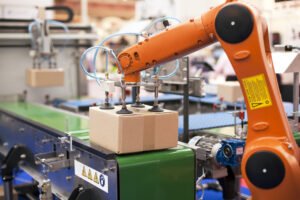AI Inferencing Explained How It Powers Machine Learning Applications

Artificial intelligence (AI) has revolutionized numerous industries, from healthcare to finance, by simulating human intelligence processes through advanced algorithms and data processing. AI inferencing, a crucial aspect of AI technology, enables machines to make predictions and decisions based on existing data. This article explores the concept of AI inferencing, its applications, and its significance in today’s technological landscape.
Components Of AI Inferencing
Trained Models
Trained models in AI inferencing are the culmination of machine learning processes where algorithms are taught to recognize patterns within datasets. These models, such as neural networks or decision trees, form the backbone of AI inferencing by utilizing learned parameters to analyze incoming data and produce outputs.
Input Data
The input data fed into AI models during inferencing varies depending on the application but generally includes raw data or pre-processed information relevant to the task at hand. For instance, in image recognition, input data could be pixel values of an image, while in natural language processing, it might consist of textual data.
Output
The output of AI inferencing is the result generated by the model after processing input data. This output could be a classification label, a numerical prediction, or a decision based on the specific AI task. The accuracy and reliability of the output are critical factors that determine the effectiveness of AI inferencing systems.
Applications Of AI Inferencing
AI inferencing finds application across What is AI inferencing diverse industries, each leveraging its capabilities to enhance operations and decision-making processes.
Healthcare: Diagnostic Systems
In healthcare, AI inferencing powers diagnostic systems by analyzing medical imaging scans or patient data to assist doctors in accurate disease diagnosis and treatment planning. For instance, AI models can detect anomalies in X-ray images or predict disease progression based on patient history.
Automotive: Autonomous Vehicles
Autonomous vehicles rely on AI inferencing to interpret sensor data (like lidar or camera feeds) and make real-time driving decisions, such as identifying obstacles, navigating traffic, and ensuring passenger safety. This technology is crucial for achieving fully autonomous driving capabilities.
Finance: Fraud Detection
Financial institutions use AI inferencing for fraud detection and prevention. By analyzing transactional data in real-time, AI models can identify suspicious patterns or anomalies that indicate potential fraudulent activities, thereby safeguarding financial transactions.
Emerging Trends
The evolution of AI inferencing continues to introduce innovative applications and advancements across industries.
Challenges And Considerations
While AI inferencing offers substantial benefits, several challenges and considerations must be addressed to optimize its effectiveness and ethical use.
Accuracy Vs. Speed
Achieving a balance between accuracy and speed is critical in AI inferencing. While accurate predictions are essential, particularly in sensitive domains like healthcare, real-time processing speed is crucial for applications such as autonomous vehicles or financial trading algorithms.
Data Privacy And Security
The use of sensitive data in AI inferencing raises concerns about data privacy and security. Protecting personal information and ensuring compliance with data protection regulations are paramount to maintaining trust and ethical standards in AI applications.
Future Outlook
Looking ahead, the future of AI inferencing holds promising advancements and broader integration into various aspects of society.
Conclusion:
AI inferencing plays a pivotal role in modern AI applications, enabling machines to process data, make informed decisions, and enhance human capabilities across industries. Understanding the fundamentals of AI inferencing is essential for navigating its potential benefits and challenges in a rapidly evolving technological landscape.





